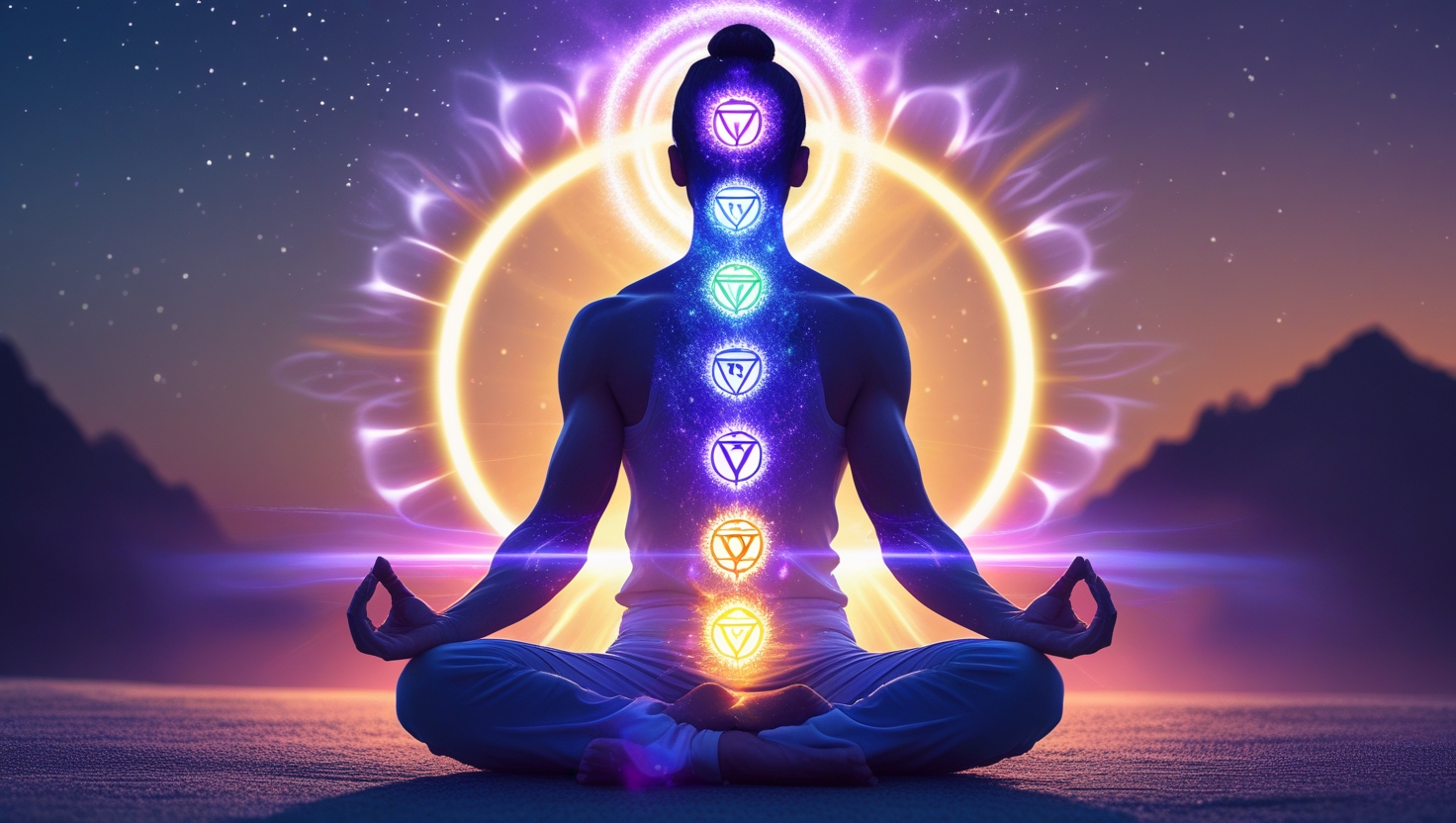Kundalini Yoga is a powerful practice that has been transforming lives for centuries. Often described as the “yoga of awareness,” it focuses on awakening the latent energy at the base of the spine and channeling it upward through a series of dynamic movements, breath work, and meditation. This ancient practice, once reserved for spiritual adepts, is now accessible to anyone seeking physical vitality, mental clarity, and emotional balance. In this comprehensive guide, we explore what Kundalini Yoga is, its fascinating history, the transformative benefits it offers, and practical tips for beginners. We also provide real-life testimonials and answer frequently asked questions to help you decide if this unique form of yoga is right for you.
What Is Kundalini Yoga?
Kundalini Yoga is not just a physical workout—it’s a holistic discipline designed to awaken the dormant energy known as Kundalini. This energy, often visualized as a coiled serpent at the base of the spine, is believed to hold the key to spiritual growth and personal transformation. By engaging in specific postures (asanas), breathing techniques (pranayama), chanting (mantras), and meditation, practitioners aim to clear blockages, balance the chakras (energy centers), and ultimately elevate consciousness.
The Essence of Kundalini
At its core, Kundalini Yoga is about harnessing the innate energy within your body and mind. This practice emphasizes:
- Dynamic Movements: Sequences of poses combined with rhythmic breathing.
- Breath Work: Specific techniques to stimulate energy flow.
- Mantras and Meditation: Repetitive chants that help focus the mind and raise vibrational energy.
The holistic approach of Kundalini Yoga aims to unite the physical, mental, and spiritual aspects of the self, resulting in a deeper awareness and a more balanced life.
The Rich History of Kundalini Yoga
Kundalini Yoga has ancient roots, with its origins steeped in the mystical traditions of India. The practice is mentioned in ancient texts and has been passed down through generations by dedicated yogis and spiritual teachers.
Ancient Origins
The concept of Kundalini energy is mentioned in early Vedic scriptures and later in Upanishads, where it is described as the potential energy that can lead to spiritual enlightenment. Over the centuries, various yogic traditions have refined techniques to awaken this energy, making Kundalini Yoga a revered path to self-realization.
Modern Revival
In the late 1960s, Yogi Bhajan brought Kundalini Yoga to the West, making it accessible to a broader audience. His teachings emphasized not only the physical aspects but also the mental and spiritual benefits of the practice. Today, Kundalini Yoga has a vibrant global community, attracting people from all walks of life who are eager to transform their lives through mindful movement and meditation.
The Transformative Benefits of Kundalini Yoga
Kundalini Yoga offers a wide range of benefits that extend far beyond physical fitness. It can be a catalyst for personal growth, inner peace, and a renewed sense of purpose.
Physical Benefits
- Enhanced Flexibility and Strength:
The dynamic movements and postures of Kundalini Yoga help improve flexibility, tone muscles, and build overall strength. As you move through each sequence, you engage your entire body, promoting a healthy flow of energy and blood circulation. - Improved Respiratory Function:
Through dedicated breath work (pranayama), practitioners learn to control and deepen their breathing. This not only boosts lung capacity but also enhances oxygen delivery to every cell in the body, contributing to increased stamina and vitality. - Detoxification and Energy Flow:
The combination of movement, sweat, and deep breathing helps expel toxins from the body. By clearing physical blockages, Kundalini Yoga enables a smoother flow of energy through the chakras, leading to improved health and a natural sense of well-being. - Boosted Immune Function:
Regular practice of Kundalini Yoga can stimulate the immune system, helping your body resist infections and maintain a balanced internal environment.
Mental and Emotional Benefits
- Increased Mental Clarity:
Meditation and mantra chanting used in Kundalini Yoga help quiet the mind and enhance concentration. Practitioners often report a greater ability to focus, make decisions, and solve problems in their everyday lives. - Stress Relief and Emotional Balance:
The practice of Kundalini Yoga is known to reduce stress by balancing the nervous system. The deep, rhythmic breathing techniques activate the parasympathetic nervous system, promoting relaxation and reducing anxiety. - Enhanced Mood and Inner Joy:
Many practitioners experience a natural uplift in mood and an overall sense of joy. The combination of physical activity, mindfulness, and spiritual connection helps release endorphins, the body’s natural “feel-good” hormones. - Healing from Emotional Trauma:
Kundalini Yoga encourages a release of pent-up emotions. The practice can help individuals work through past traumas and negative thought patterns, leading to emotional healing and a more positive outlook on life.
Spiritual Growth and Awareness
- Awakening of Inner Energy:
The core aim of Kundalini Yoga is to awaken the dormant energy at the base of the spine. As this energy rises through the chakras, it can lead to profound spiritual experiences and a deep sense of connectedness with the universe. - Heightened Intuition:
As your practice deepens, you may notice a stronger sense of intuition and a clearer understanding of your life’s purpose. Many practitioners report that decisions become easier and more aligned with their true self. - Sense of Unity:
Kundalini Yoga teaches that we are all interconnected. This understanding can lead to a greater sense of compassion, empathy, and a desire to contribute positively to the world around you.
How Kundalini Yoga Awakens Your Energy
The term “Kundalini” refers to the coiled energy that lies dormant at the base of the spine. In Kundalini Yoga, the goal is to awaken this energy and allow it to flow freely through the body, activating each chakra along the way.
The Role of Chakras
Chakras are energy centers located along the spine, each corresponding to different aspects of our physical, emotional, and spiritual health. There are seven main chakras:
- Muladhara (Root Chakra): Stability and survival.
- Svadhisthana (Sacral Chakra): Creativity and sexuality.
- Manipura (Solar Plexus Chakra): Power and self-esteem.
- Anahata (Heart Chakra): Love and compassion.
- Vishuddha (Throat Chakra): Communication and truth.
- Ajna (Third Eye Chakra): Intuition and insight.
- Sahasrara (Crown Chakra): Spiritual connection and enlightenment.
When the Kundalini energy rises, it passes through each chakra, activating and balancing them. This process can lead to profound transformations, both physically and spiritually.
Techniques to Awaken Kundalini
- Dynamic Postures:
Specific sequences of poses help stimulate energy flow along the spine. These postures are designed to open up the body and release any blockages that might be preventing the free flow of energy. - Breathing Techniques (Pranayama):
Controlled breathing is central to Kundalini Yoga. Techniques such as Breath of Fire—a rapid, rhythmic breath—help generate heat, clear toxins, and energize the body. - Chanting and Mantras:
Sound vibrations play a crucial role in awakening the Kundalini energy. Mantras like “Sat Nam” (meaning “truth is my identity”) are repeated to help focus the mind and raise vibrational energy. - Meditation:
Deep meditation allows the mind to quiet down and become more receptive to inner energy. It creates a space where the Kundalini energy can emerge and flow without hindrance.
Personal Transformations Through Kundalini Yoga
For many practitioners, Kundalini Yoga is not just a workout—it’s a journey of self-discovery and transformation. The process of awakening your inner energy can lead to dramatic changes in all aspects of your life.
Real-Life Testimonials
Emma’s Journey to Inner Peace
Emma, a corporate professional, struggled with stress and burnout for years. After discovering Kundalini Yoga, she began to experience a profound shift in her life. “I was skeptical at first, but as I committed to the practice, I felt a deep sense of calm and clarity. The meditations and breathing exercises helped me release years of built-up tension, and I now feel more connected to my true self,” she shares.
David’s Path to Emotional Healing
David, who had battled depression for much of his adult life, found solace in Kundalini Yoga. “The practice allowed me to confront my emotions head-on. Through chanting and meditation, I learned to accept and process my feelings instead of suppressing them. It wasn’t an overnight miracle, but over time, I began to feel lighter, happier, and more hopeful about the future.”
Maria’s Awakening of Creativity
Maria, an artist, credits Kundalini Yoga with unlocking her creative potential. “I used to struggle with creative blocks, feeling like my ideas were always just out of reach. Kundalini Yoga opened up a new realm of inspiration for me. The energy work and meditation helped clear my mind, and suddenly, I was filled with innovative ideas and a renewed passion for my art.”
What to Expect in a Kundalini Yoga Session
A typical Kundalini Yoga class is a blend of physical postures, breath work, chanting, and meditation. Here’s a step-by-step look at what you might experience during a session:
1. Setting the Stage
Classes usually begin with a brief introduction where the teacher explains the focus of the day. The atmosphere is calm, and you might notice soft music or a simple bell to signal the start of the practice. Many studios incorporate elements of incense or essential oils to create a sacred space.
2. Warm-Up and Centering
The session often starts with gentle stretches and warm-up exercises to prepare the body. This phase is essential for releasing tension and setting a mindful tone. Teachers might guide you through a short meditation or breathing exercise to help you center your thoughts.
3. Dynamic Sequences and Breath Work
As the class progresses, you’ll be led through dynamic sequences that involve a series of poses synchronized with specific breathing techniques. The Breath of Fire, a rapid and rhythmic breath, is common in Kundalini sessions. This energetic breathing helps generate heat in the body, clearing stagnation and energizing the system.
4. Chanting and Mantra Meditation
A significant component of Kundalini Yoga is the use of sound vibrations to uplift the spirit. You may be invited to chant mantras such as “Sat Nam” or “Wahe Guru.” The repetition of these mantras creates a meditative state, aligning your mind and body with a higher frequency.
5. Deep Meditation and Relaxation
Towards the end of the session, you will likely settle into a period of meditation or deep relaxation. This is the time to absorb the benefits of the practice, let go of any residual tension, and allow the awakened energy to flow freely.
6. Reflection and Integration
After class, many practitioners spend a few moments reflecting on their experience. This might involve journaling or sharing insights with the group. This reflection is crucial for integrating the lessons learned during the session into everyday life.
Tips for Beginners
Starting your Kundalini Yoga journey can feel both exciting and overwhelming. Here are some practical tips to help you ease into the practice:
- Start Slow:
Begin with shorter classes designed for beginners. Allow your body and mind to gradually adapt to the intense energy work. - Stay Consistent:
Regular practice is key. Even 20 to 30 minutes a day can lead to noticeable changes over time. - Listen to Your Body:
Kundalini Yoga can bring up powerful emotions and sensations. If something feels overwhelming, take a break or modify the posture as needed. - Create a Sacred Space:
Whether you’re practicing at home or in a studio, try to create an environment that is peaceful and free from distractions. Dim lighting, calming music, or incense can help set the mood. - Wear Comfortable Clothing:
Choose clothing that allows free movement. Form-fitting clothes are often recommended to help you stay aware of your body alignment. - Stay Hydrated:
Keep a water bottle nearby. Hydration is important, especially during the dynamic breathing exercises. - Embrace the Journey:
Remember that Kundalini Yoga is as much about the inner journey as it is about physical movement. Be patient and compassionate with yourself as you learn and grow.
Integrating Kundalini Yoga Into Your Daily Life
The true power of Kundalini Yoga lies not only in the class itself but also in how you integrate its principles into everyday life. Here are some strategies to carry its benefits off the mat:
Mindful Breathing Throughout the Day
Practice mindful breathing at various points during your day—whether you’re at work, commuting, or relaxing at home. Taking a few deep breaths can help reduce stress and bring you back to the present moment.
Regular Meditation
Set aside time each day for meditation. Even a short session of 10 minutes can help you connect with your inner energy, improve mental clarity, and set a positive tone for the day.
Use of Mantras
Incorporate mantra chanting into your daily routine. Repeating a simple mantra like “Sat Nam” can serve as a reminder of your true nature and keep you aligned with your inner self.
Journaling Your Experience
Keeping a journal of your Kundalini Yoga practice can be incredibly beneficial. Note any insights, emotional shifts, or physical sensations you experience. Over time, you’ll begin to see patterns that can guide you on your journey of transformation.
The Spiritual Journey: More Than Just Physical Practice
While many people are drawn to Kundalini Yoga for its physical benefits, the spiritual aspect is equally significant. The practice encourages introspection and self-inquiry, leading to profound personal insights.
Embracing Inner Transformation
Kundalini Yoga teaches that the journey to transformation begins within. As you work on awakening your inner energy, you may find that old patterns, fears, and limiting beliefs start to dissolve. This inner alchemy paves the way for personal growth and a deeper understanding of your life’s purpose.
Connecting With a Higher Consciousness
The meditative and mantra components of Kundalini Yoga are designed to help you tap into a higher state of consciousness. Many practitioners report experiences of oneness, deep inner peace, and an expanded awareness that transcends the physical realm. This connection can be both healing and empowering, allowing you to navigate life’s challenges with a sense of calm and clarity.
Community and Support
The Kundalini Yoga community is known for its warmth and inclusivity. Whether you’re attending a local class or joining an online group, you’ll find support from fellow practitioners who share your journey. This sense of community can be a vital part of your transformation, providing encouragement and inspiration along the way.
Overcoming Common Challenges
Like any transformative practice, Kundalini Yoga comes with its own set of challenges. Being aware of these potential hurdles can help you navigate your journey more smoothly.
Managing Intense Emotions
Kundalini Yoga can bring deep-seated emotions to the surface. It’s important to approach these experiences with compassion. If you find yourself overwhelmed, consider speaking with a teacher or mental health professional who is familiar with yoga therapy.
Balancing Energy Levels
As you awaken your inner energy, you might experience fluctuations in your energy levels. Some days may feel incredibly vibrant, while others might be more challenging. This ebb and flow is normal—acknowledge it and adjust your practice accordingly.
Physical Discomfort
For beginners, some of the dynamic movements and deep stretches can initially cause physical discomfort. It’s essential to listen to your body, modify poses as needed, and progress at your own pace. Over time, your strength and flexibility will improve, and the practice will feel more natural.
FAQs
Q1: What is the main focus of Kundalini Yoga?
A: Kundalini Yoga is focused on awakening the dormant energy at the base of the spine and channeling it through the chakras using dynamic movements, breath work, chanting, and meditation.
Q2: Is Kundalini Yoga suitable for beginners?
A: Yes, Kundalini Yoga is accessible to all levels. Many classes are designed specifically for beginners, with modifications provided to ensure a safe and effective practice.
Q3: How often should I practice Kundalini Yoga to see benefits?
A: Regular practice is key. Even short sessions of 20-30 minutes daily can lead to noticeable improvements in physical energy, mental clarity, and emotional balance over time.
Q4: What should I expect in a typical Kundalini Yoga class?
A: A typical class includes a warm-up, dynamic sequences with breath work, mantra chanting, and a period of meditation or deep relaxation. Each session is designed to clear energy blockages and awaken your inner vitality.
Q5: How does Kundalini Yoga differ from other types of yoga?
A: Unlike traditional yoga, which focuses primarily on physical postures and flexibility, Kundalini Yoga emphasizes the awakening and channeling of inner energy through combined practices of movement, breath, and sound.
Q6: Can Kundalini Yoga help reduce stress and anxiety?
A: Yes, many practitioners find that the meditative and breathing techniques used in Kundalini Yoga significantly reduce stress and anxiety, promoting a deeper sense of calm and mental clarity.
Q7: What kind of clothing should I wear to a Kundalini Yoga class?
A: Wear comfortable, form-fitting clothing that allows freedom of movement. Avoid overly loose garments that might interfere with the dynamic postures and breath work.
Q8: Are there any precautions for those with health issues?
A: If you have any chronic health conditions or are pregnant, it’s best to consult with a healthcare professional before starting Kundalini Yoga. Always inform your instructor of any concerns so they can offer appropriate modifications.
Q9: How does mantra chanting benefit the practice?
A: Mantra chanting uses sound vibrations to focus the mind, raise your energy levels, and promote a deeper meditative state. It is a central component in balancing the chakras and aligning your inner self.
Q10: Where can I find Kundalini Yoga classes near me?
A: Many local yoga studios offer Kundalini Yoga classes. You can also explore online classes and workshops, which have become increasingly popular, especially if you prefer to practice from the comfort of your home.
Conclusion
Kundalini Yoga is much more than a physical exercise—it’s a journey into the very essence of who you are. By awakening the dormant energy within, this ancient practice offers profound physical, mental, and spiritual benefits that can transform your life. Whether you’re seeking increased flexibility, stress relief, emotional healing, or a deeper spiritual connection, Kundalini Yoga provides a comprehensive path to personal transformation.
As you embark on your Kundalini journey, remember that each practice is a step toward greater self-awareness and empowerment. Embrace the process with patience and openness, and allow yourself to be guided by the powerful energy within. With time, dedication, and a supportive community, you can experience the remarkable transformation that Kundalini Yoga promises—a revitalized body, a clear mind, and a spirit awakened to the infinite possibilities of life.
May your practice bring you the energy, clarity, and inner joy you seek. Awaken your potential, transform your life, and step into a higher state of consciousness with Kundalini Yoga.














Add comment